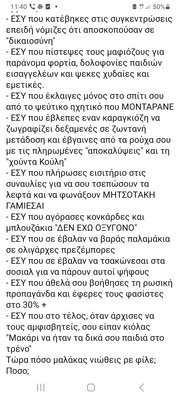Κύριε Μητσοτάκη ελπίζω πέρα από το εδάφιο
486 περί CFD που θα αφαιρεθεί, να αφαιρέσετε και το
485
Δίπλα είναι εξάλλου
το έχετε διαβάσει εσείς και γνωρίζετε...
΄Ώστε να βγει το
''Ευαγγέλιο 2.0 ''
485
In addition,
EODASAAM reached out to
Mr. Konstandopoulos, Professor of Chemical Engineering at the Aerosol &
Particle Technology Laboratory of the Aristotle University, Thessaloniki, Greece, with questions related to the
possibility of the formation of a combustible aerosol mix of silicone oil as a direct cause of the crash. Prof.
Konstandopoulos offered a short technical report on the issues in question, stating that, given the approximate
time of 0.4 sec for the initial ignition and development of the fireball, there is no realistic way to suggest that such
an
energy transfer and silicone oil ignition and combustion could possibly happen in the given timeframe and rate
of development of the
fireball combustion. Furthermore, Prof. Konstandopoulos has calculated the amount of
white dust
(silicone dioxide, SiO₂) that would have been formed after the combustion of 2.4 metric tons of PDMS
oil, to the amount of 1.94 metric tons that
were clearly not present at the accident site.
486
In parallel, under the supervision of EDAPO,
computational fluid dynamics (CFD) simulations were run in an
attempt to recreate the event as recorded by the cameras using only mathematical computer models and their
visualisation tools8 :
- Fire Dynamics Simulator (FDS) is a CFD model of fire-driven fluid flow. The software solves numerically a form
of the Navier-Stokes equations appropriate for low-speed, thermally-driven flow, with an emphasis on smoke
and heat transport from fires.
- Smokeview (SMV) is a visualization program that is used to display the output of FDS and CFAST simulations.










